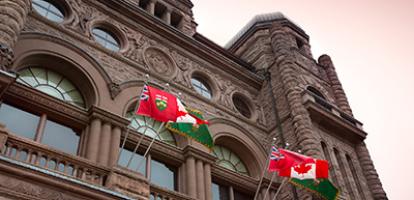On May 9, an expert panel on money laundering issued its report, Combatting Money Laundering in BC Real Estate, in which it estimated 2018 money laundering in Canada at $46.7 billion. In a recent C.D. Howe Institute report, titled Why We Fail to Catch Money Launderers 99.9% of the Time, I estimate money laundering in Canada at $100 billion to $130 billion. Who’s right?
Actually, it doesn’t matter. Both estimates are massive. They sound an alarm for action, and we now turn to our federal and provincial leaders to implement a public registry of beneficial ownership, as recommended by both reports.
Unfortunately, instead of action, some officials have attacked the panel report for its surprising allocation of money laundering among the provinces (for example, Alberta’s share was 55 per cent greater than British Columbia’s) and that likely misallocation is being used to undermine the credibility of its estimated national amount.
Let’s be clear. The report’s estimate of $46.7 billion is very conservative. And any misallocation of that amount among the provinces is not the panel’s fault. It’s Canada’s.
To estimate money laundering in Canada and B.C., the panel used the Utrecht model. It begins with a global estimate of money laundering based on UN crime statistics as reported by each country. It then allocates that money among countries, including Canada, based on their own crime rates and an attractiveness index that attempts to measure how attractive a country is to money launderers of another country.
To measure that attractiveness, the model restricts its variables to rudimentary data that are available for even failed states and secretive nations. For instance, in “determining a country’s policy towards money laundering,” the model gives Canada its best rating simply because we’ve never been blacklisted by FATF, the international body for anti-money-laundering standards.
That simplicity can accurately tell you how Canada compares to Haiti and Iran, but it doesn’t tell you how weak our laws are compared to other Western liberal democracies. And, as I argue in the C.D. Howe Institute report, that’s the most relevant determinant of our attractiveness to international money launderers.
Criminals from corrupt and authoritarian regimes fear keeping their illicit assets in their home countries because someone closer to power may confiscate those assets. They reduce that risk by investing their dirty money in Western liberal democracies where the rule of law prevents arbitrary confiscation.
Unfortunately, Canada’s anti-money-laundering laws are among the weakest of Western liberal democracies. We not only don’t have a public registry of beneficial ownership; we generally don’t require any beneficial ownership disclosure whatsoever.
That makes us a doubly attractive target for international money launderers. Our weak anti-money-laundering laws protect money launderers from detection and prosecution, and our strong rule of law protects their assets from arbitrary confiscation.
The model doesn’t adjust for either of those key factors, which suggests its $46.7-billion national estimate is very low.
In fairness to the model, the standard practice of conducting a final check on the accuracy of its estimates and allocations was made impossible because Canada’s intelligence agency for money laundering was unable to provide basic anti-money-laundering information.
When the panel asked FINTRAC for its collected suspicious-transaction reports on a country-by country and province-by-province basis, FINTRAC admitted it was unable to do either. Since the model’s first use in 2005, Canada is the only country whose intelligence agency for money laundering lacked such capability.
That information would have indicated where the dirty money was likely coming from and which provinces were targeted most. And if the suspicious-transaction reports indicated a high level of dirty money was coming from authoritarian and corrupt regimes, such as China, Russia and several Middle Eastern countries, as opposed to a low corruption country such as the U.S., upward adjustments could have been made not only to the $46.7 billion national estimate, but also to the allocations to provinces with large cities that would be culturally familiar to Chinese, Russian and Middle Eastern crooks.
Our anti-money-laundering laws are a mess. And as more countries implement public registries of beneficial ownership, more of the world’s dirty money will be redirected to Canada.
The same will likely happen among our provinces. B.C. will soon have a public registry of beneficial ownership for real estate, which will likely redirect more dirty money to those large-city provinces that fail to follow B.C.’s lead.
That puts Canada, Ontario, Quebec and Alberta on notice that higher levels of laundered money are coming their way. The call for a public registry has never been louder.
Kevin Comeau is a retired lawyer who has written on policy and legislative proposals to combat money laundering in Canada. He is a member of Transparency International Canada’s Working Group on Beneficial Ownership Transparency.





